NAM, Partners File Opening Brief in Suit Against EPA

On Thursday, the NAM, joined by other business groups, filed the opening brief in their pending lawsuit against the Environmental Protection Agency.
What’s going on: In March, the groups petitioned the D.C. Circuit to review the EPA’s reconsideration of the National Ambient Air Quality Standards for fine particulate matter (or PM2.5), which lowers the allowable level to 9 micrograms per cubic meter of air from 12, a 25% reduction. The agency handed down the final, tightened rule in February.
- In their brief, the coalition argues that the EPA lacks the authority under the Clean Air Act—the law that authorizes it to establish the NAAQS—to “reconsider” a decision made in 2020 to not lower the PM2.5 standard; that the agency failed to take into account the cost and feasibility of a tightened standard; and that it failed to give a “reasoned explanation for key aspects of its decision.”
- The groups participating in the suit with the NAM are the U.S. Chamber of Commerce, the American Chemistry Council, the American Petroleum Institute, the American Forest & Paper Association, the American Wood Council, the National Mining Association and the Portland Cement Association.
Why it’s important: The tighter NAAQS rule could result in many parts of the U.S. being designated as in nonattainment, which would trigger significant new costs for manufacturers and others attempting to obtain air permits in those locations.
- Many of these areas “are indisputably handicapped in their ability to reduce emissions to meet the new NAAQS” due to factors beyond municipalities’ and manufacturers’ control (i.e., wildfires, which affect most of the contiguous U.S. at some point each year).
- The new rule could also prevent manufacturers from building or modifying facilities in certain areas, undermining the Biden administration’s own “Investing in America” agenda, as it would stifle investment in manufacturing and kill—not create—well-paying manufacturing jobs.
What should be done: The rule should be vacated as soon as possible, the groups told the court.
Lockheed Martin to Aid in Missile Production
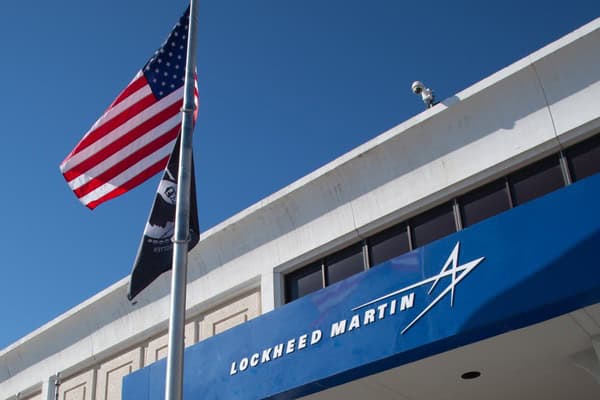
Lockheed Martin is helping strengthen the U.S. defense industrial base (Zacks.com).
What’s going on: The defense contractor’s Space Systems business unit recently finalized a modification contract deal to “provide systems engineering, test planning and long lead material to support missile production” to the U.S. Navy’s Strategic Systems Programs.
- The contract, valued at $99 million, is expected to be finished by Feb. 2, 2027.
Why it’s happening: “Nations are reinforcing their military capabilities to strengthen their defense structure in the growing threat environment.”
- Spending by countries on defense capabilities—including missiles—has picked up in recent years, following Russia’s invasion of Ukraine (Breaking Defense).
- “Lockheed’s weapon systems include precision strike weapons with long standoff ranges to keep pilots and aircraft out of harm’s way.”
Why it’s important: The growing number of global threats now confronting the U.S. and its allies mean we must be prepared, and manufacturers such as Lockheed Martin are a critical part of the equation.
Rio Tinto Seeks to Meet Growing Copper Appetite
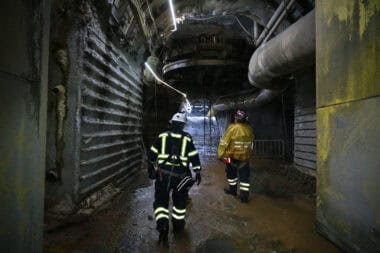
The demand for copper is skyrocketing—and global mining company Rio Tinto is powering forward full throttle to meet it (CNBC).
What’s going on: “The red metal, considered a barometer for economic health, is a vital component for the construction and defense industries as well as a key component in electric cars, wind turbines and the power grid.”
- However, current mines and in-the-works projects “will meet only 80% of copper needs by 2030, according to the International Energy Agency.”
- “There’s this growing consensus that demand fueled by the energy transition is going to outstrip supply, and that’s why analysts say we are simply not going to have enough of it,” said CNBC Markets Reporter Pippa Stevens in a recent CNBC video. “And copper really is the backbone of decarbonization goals.”
The challenges: Copper mining is difficult and expensive—and it takes 10 to 15 years to build each mine, Rio Tinto CEO Bold Baatar told CNBC.
A beneficial metal: Copper is the most economical conductor available, and directly and indirectly, it supports more than 395,000 U.S. jobs and more than $160 billion in economic output.
Behind the scenes: CNBC went behind the scenes at Rio Tinto’s Kennecott operations in Utah, where “about 200,000 metric tons of copper are produced annually.”
- There, Rio Tinto is increasing its open-pit mining operations and has started an underground project to mine higher-grade ore.
- Kennecott is unique for its smelter and refinery, “where the ore is processed into almost pure copper.”
Permitting challenges: Another of Rio Tinto’s projects, the Resolution Copper mine in Arizona, has the potential to power up to 25% of U.S. copper demand—but it has been mired in a regulatory morass for the better part of two decades.
- “The last hard-rock mine that was permitted was in 2008,” Rio Tinto Copper Chief Operating Officer Clayton Walker told the news outlet. “We’ve been working on the Resolution Mine for about 18 years.”
Independence is possible: “Theoretically, there are enough reserves in the U.S. that we could become independent for our copper needs,” Walker continued. “It’s just, how do we do that? How do we get the permits?”
What the NAM is doing: The NAM has been engaging directly with the Biden administration and members of Congress through meetings and briefings at NAM headquarters to push for comprehensive permitting reform.
- In addition, the NAM, along with members of the NAM’s Council of Manufacturing Associations and Conference of State Manufacturers Associations, last summer launched Manufacturers for Sensible Regulations, a coalition that seeks to speed up the frequently slow, arduous federal permitting process for energy infrastructure projects and address the large number of regulations being churned out by the federal government.
Announcing the Winners of the 2024 Manufacturing Leadership Awards
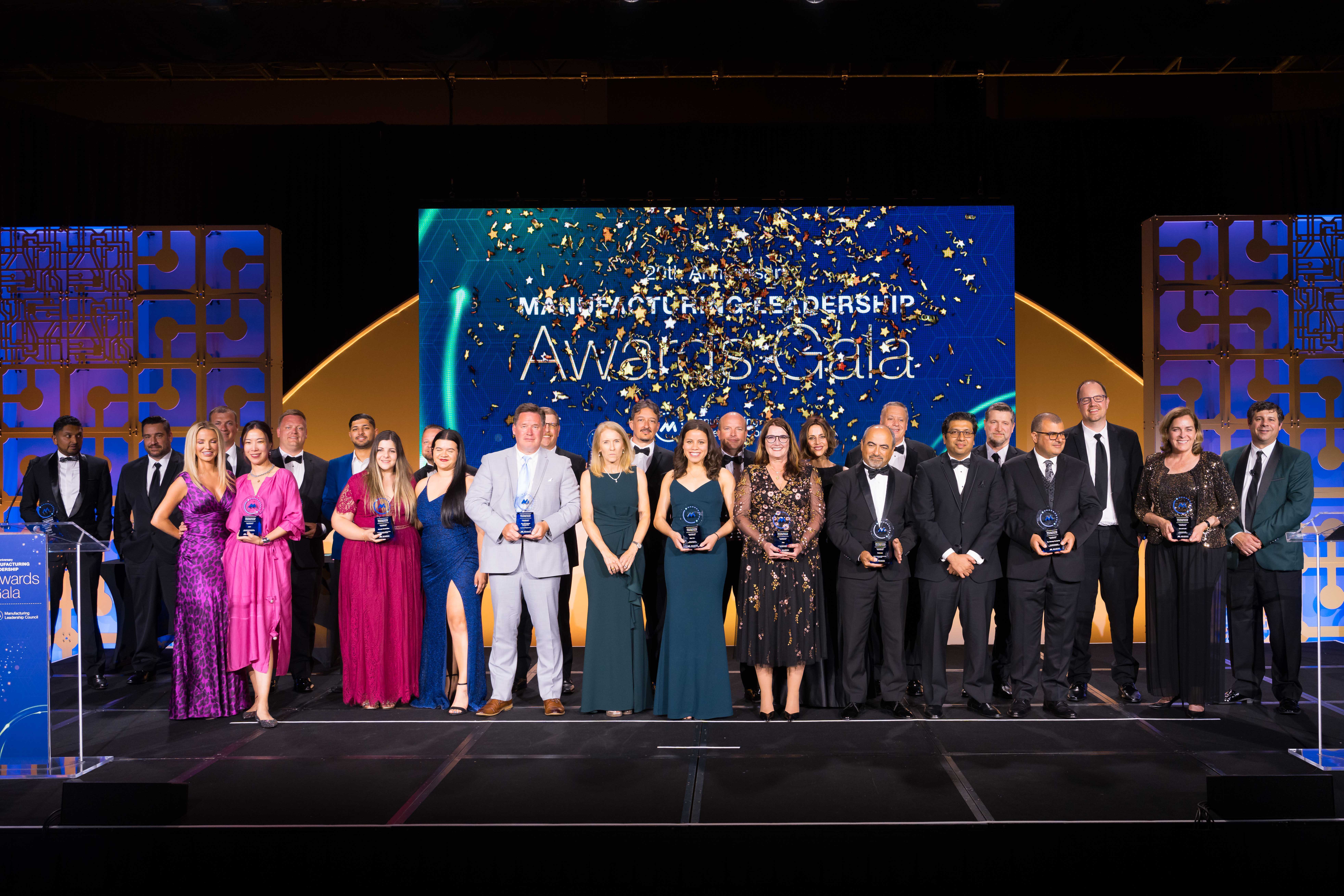
The names are in! The Manufacturing Leadership Council—the NAM’s digital transformation division—is pleased to announce the winners of the 2024 Manufacturing Leadership Awards.
Now in its 20th year, the awards competition recognizes outstanding manufacturing companies and their leaders for groundbreaking use of advanced manufacturing technology.
“The class of 2024 should indeed be proud of their achievements in advancing the digital model of manufacturing,” said MLC Founder, Vice President and Executive Director David R. Brousell. “The awards reflect the truly incredible amount of innovation taking place in all sectors of the industry.”
Manufacturing Leader of the Year: Cooley Group President and CEO Daniel Dwight is the 2024 Manufacturing Leader of the Year.
- Dwight, who also serves on the MLC’s Board of Governors and is a member of the Executive Committee of the NAM Board of Directors, has overseen a significant turnaround in Cooley’s business performance through digital transformation, with a commitment to investing in smart factory technologies and developing a digital-ready workforce and business culture.
- In addition, the MLC named Cooley Group the 2024 Small/Medium Enterprise Manufacturer of the Year.
Large Enterprise Manufacturer of the Year: Intertape Polymer Group is the 2024 Large Enterprise Manufacturer of the Year.
- The award recognizes IPG’s achievements in digital transformation, including technology integration and workforce training.
- The company has also made noteworthy strides in sustainability through reductions in both energy usage and waste.
More honors: The MLC also announced winners in 11 project and individual categories, as well as the winners of the Manufacturing in 2030 Awards. The latter are given to projects with particularly forward-thinking innovations.
- The MLC honored all finalists and winners at the Manufacturing Leadership Awards Gala last night in Marco Island, Florida. A complete list of finalists and winners is available here.
Nominations for the 2025 season of the Manufacturing Leadership Awards will open on Sept. 16, 2024. More information is available here.
Texas Sues to Block DOL Overtime Rule

Texas has filed suit in an effort to vacate a Biden administration regulation that would make millions more workers eligible for overtime pay (Reuters, subscription).
What’s going on: “Republican Texas Attorney General Ken Paxton in a complaint filed in Sherman, Texas, federal court on Monday said the rule violates federal wage law by basing eligibility for overtime on how much workers are paid rather than the duties they perform.”
- The expanded rule, released by the Department of Labor in late April, violates states’ constitutional right to structure the pay of state employees and thus how to allocate their budgets, Texas said.
- Attorneys for the Lone Star State added that the regulation—which the department has said would make about 4 million additional workers eligible for overtime pay—will force states to “eliminate or alter employment relationships and cut or reduce services and programs.”
- Also on Monday in Texas, software company Flint Avenue filed a suit saying “the rule is arbitrary and capricious, and that the DOL lacked the authority to issue the change” (Bloomberg Law, subscription).
What it would do: The expanded rule drastically bumps up the salary threshold for determining a worker’s overtime pay eligibility.
- Under it, starting in 2025, most employees making less than $58,656 will be owed time-and-a-half wages when they work more than 40 hours in a single workweek (Bloomberg Law, subscription).
- The current threshold is about $35,500.
Why it’s important: The new overtime rule “places new constraints on employers, reduces flexibility for the workers who will be reclassified and may force companies to make painful choices that limit both job creation and growth opportunities available to employees,” NAM Managing Vice President of Policy Chris Netram said in April.
- “This … regulatory hurdle will complicate manufacturers’ efforts to fill the millions of jobs our industry is projected to create within a decade.”
Centrus Aims to Make U.S. a Top Uranium Enricher
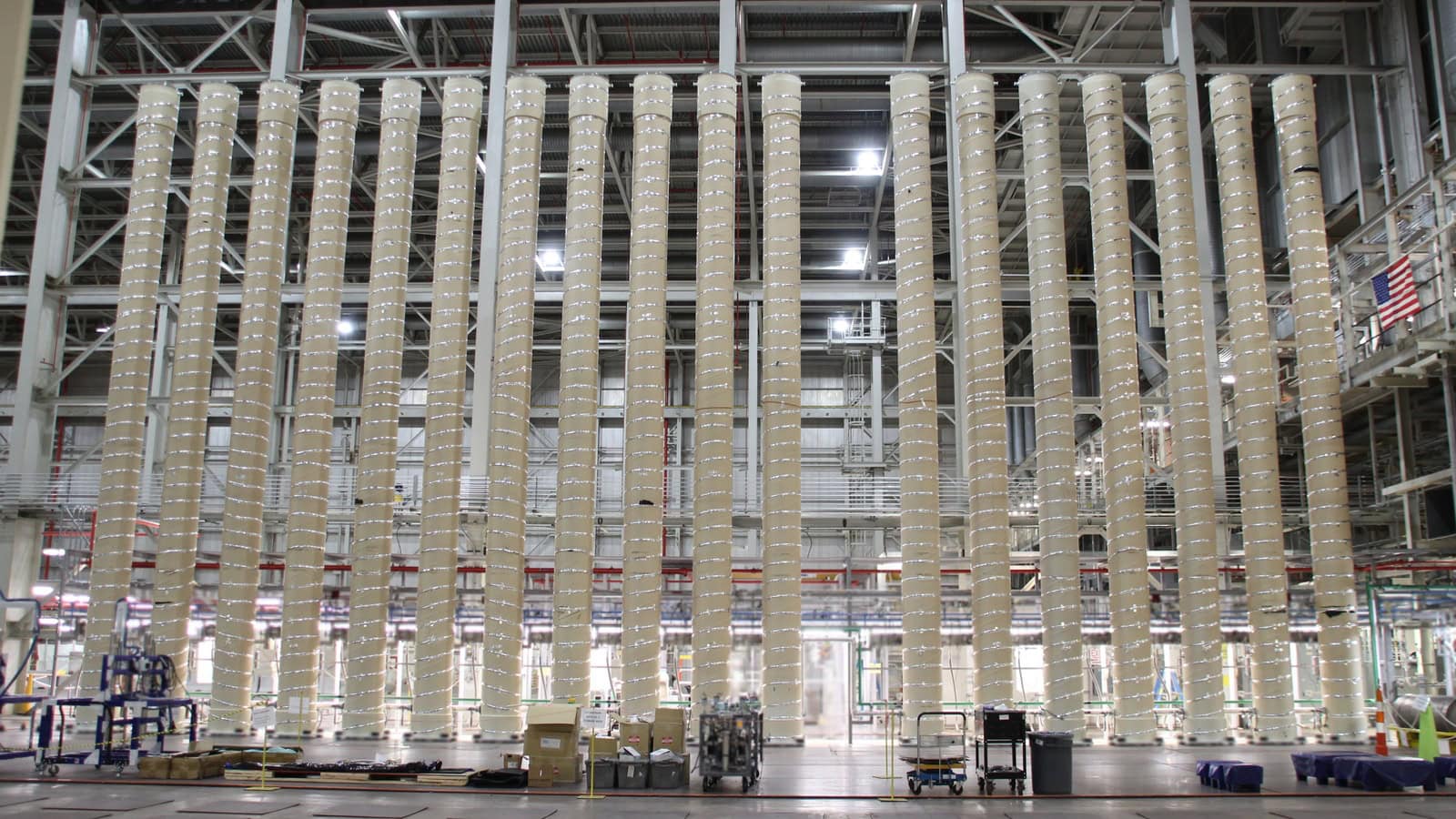
The most difficult part of creating nuclear power is enriching the uranium—and that’s precisely where Centrus Energy Corporation has set out to make America the global leader.
A unique position: The Bethesda, Maryland–headquartered Centrus, which is the only U.S.-owned enricher of uranium, can trace its roots as a company back to the Manhattan Project, the secret government initiative during World War II that brought the U.S. into the atomic age.
- The company is uniquely poised to make good on its aim to bring clean, plentiful, affordable and reliable energy to the world.
- “Nuclear power is reliable—so much so that we’ve seen a lot of the growth in nuclear generation around the world,” Centrus President and CEO Amir Vexler told the NAM.
- In 2023, global nuclear power generation grew 8%, after declining the prior year.
Geopolitical-fueled growth: The driver behind the expansion? Russia’s 2022 invasion of Ukraine, according to Vexler.
- “Since 2022, a lot of nations realized they have to have some level of sovereignty around power generation,” he said. “With nuclear, you’re not dependent on fossil fuels from other countries, which is particularly important if you’re a nation that’s not rich in resources.”
- In the more than two years since the start of the war in Ukraine, Russia has lost its position as the world’s top oil and gas exporter, as the U.S. and allies have sought to wean themselves off Russian energy imports.
A catch-22: But there’s no nuclear power without uranium—and ironically, Russia holds approximately 44% of the world’s uranium-enrichment capacity, according to the Department of Energy, and supplies nearly a quarter of the enriched uranium used in U.S. reactors.
- However, that monopoly may soon start to crumble, as in May President Biden signed bipartisan legislation to ban the import of Russian low-enriched uranium, also known as LEU.
Building up domestic supplies: At the same time, the U.S. is moving to ramp up domestic uranium production—and Centrus is key to making it happen.
- In November 2022, the DOE announced a $150 million cost-shared award with a Centrus subsidiary to demonstrate the capability to produce high-assay low-enriched uranium, or HALEU, an advanced fuel form needed to power the next generation of nuclear reactors.
Sole producer: HALEU is uranium enriched to between 5% and 20% uranium-235, and Centrus’ Piketon, Ohio, enrichment plant is the only American facility licensed to produce it.
- The Piketon facility began HALEU enrichment in late 2023, becoming the first U.S.-owned enrichment plant to start production in nearly 70 years. With sufficient public and private investment, Centrus could add thousands of centrifuges for the large-scale production of LEU for existing reactors and HALEU for future reactors. The plant could also provide enriched uranium for national security missions.
Filling a crucial vacuum: The removal of Russia from the uranium-enrichment landscape “creates a huge vacuum,” and it’s America’s to fill. In fact, doing so is a national security imperative, Vexler continued.
- “The enrichment process—creating the technology and building the machines—is so demanding, we as a country cannot cede it to others. Once that knowledge leaves our shores, we will never get it back. We have ceded [nuclear knowledge] to the Russians and Europeans before and it’s hard to catch up. … This is a complex supply chain that is extremely specialized, with an enormous amount of value add.”
- If the U.S. establishes robust uranium enrichment processes and facilities, he said, the country “could become a net exporter [of nuclear fuel] to Europe, Latin America [and] Asia. If we don’t compete in those markets, the Russians will.”
Safe, sound and lucrative: The cartoonish portrayal of the nuclear industry in popular culture has done it a disservice. It’s a fundamentally safe sector—and it can ensure well-paying jobs for years to come.
- “There is such great misinformation” about nuclear energy, Vexler said. “One of our biggest enemies is probably animated shows with catastrophic images [of nuclear plants]. … Consider that a U.S. company is enriching uranium here and will create a generation of people that will know about how to do it—technicians, electricians and more who understand these complex machines.”
- The nuclear sector is assiduously regulated and held to high standards, and it’s always learning, evolving and coming up with new reactor designs. “It’s probably one of the safest industries in the world.”
The last word: Vexler is optimistic about the future—both for Centrus as a company and for the U.S. as a major nuclear-power exporter.
- “I commend the U.S. government; there are many in it who are strong champions of nuclear power,” Vexler told us. “Getting the amount of funding that’s been allocated is a great accomplishment. With the continued support of the government and a public–private partnership, we will bring enrichment and all the associated benefits back to the U.S.”
Beyond the Buzzwords: Digital Transformation in Manufacturing

Technology is constantly changing. But how will this era of digital transformation change the manufacturing industry?
The NAM’s Leading Edge program partnered with Siemens to present “Beyond the Buzzwords: A Digital Thread Journey,” a four-part webinar series dedicated to understanding how cutting-edge ideas affect manufacturers. In the first episode, we put the digital transformation journey in context by introducing the “digital thread.” In the next three, we dove deeper into cloud acceleration, artificial intelligence and radical flexibility.
Cloud acceleration: A business’s digital needs are covered by a combination of software, hardware and physical infrastructure. If you turn to an offsite partner to provide any of those elements, then you are probably already using cloud acceleration to support your business.
- We spoke with Surf Loch Director of Project and Process Development Bryan Behr, Siemens Senior Vice President of Cloud Application Services Raymond Kok and Surf Loch Systems Engineer Miles Miller to learn more.
What it is: Cloud acceleration refers to a wide range of on-demand computing services hosted outside of your organization.
- Kok explained that cloud acceleration “is really a layer cake with three layers to it.” At the highest level is “infrastructure as a service,” like data centers. In the middle is “platform as a service,” which might provide you with the building blocks to create your own applications. And at the final layer is “software as a service,” which is what you would typically get from a commercial software vendor.
How it helps: Cloud acceleration is easier, more cost effective and more flexible than managing all of your computing needs internally.
- “The cool thing about the cloud is how containerized everything is,” said Miller. “Data is readily available in a very organized fashion. … If there’s a problem or something needs to be solved, we can put that data in the right hands.”
- Behr also pointed out the benefits for digital security. “It’s either rely on one thing to maintain our security on premise or rely on a very sophisticated cloud team as part of a set of resources. … [I]t became pretty obvious that that appears to be a safer place for us than potentially on premise.”
Learn more: To learn more about cloud acceleration, check out the full webinar here.
AI/machine learning: We know that AI and machine learning are affecting every industry. But how should manufacturers use this new technology?
We brought together Siemens Advanta North America CEO Rani Russell Shea and Schaeffler Special Machinery Head of Electrical & Software Engineering Stefan Gahabka to learn about how to approach AI.
How it works: “The basic idea with AI is that you use data to train models,” said Shea. “Those models can run analytics and then essentially make decisions while learning things, like pattern detection. And then when you’re talking specifically about industrial AI, you’re talking about using AI for machine learning solutions, to solve business problems, things like factory optimization.”
Augmenting humanity: According to Shea and Gahabka, AI is intended to elevate the human factor in manufacturing, not replace it.
- “Everybody really wants to be able to do their job better, faster, more accurately, more safely, more sustainably,” said Shea. “AI … is going to help us do that, and by doing that, it’s literally elevating the role of people so we’re free to then use our creativity, our experience and our knowledge to really address the complex stuff.”
Doing more: AI can be used to measure, model and optimize everything from energy usage to supply chains—even helping manufacturers find the right partners to match their sustainability objectives.
- “We talk about the hard things like quality and cost, but can also think about the next step,” said Gahabka. “We can search for suppliers that have sustainable locations and goals.”
Learn more: To learn more about AI and machine learning, check out the full webinar here.
Radical flexibility: Many think of efficient manufacturing in terms of highly standardized automatable processes. Today, though, new technology is creating new possibilities for manufacturers.
We convened an expert panel with Vice-President of Digital Enterprise at Siemens Alastair Orchard, Global Engineering Director and Automation & Robotics Lead at Unilever Cesare Gibilaro, and Process Orchestration & Manufacturing Hub, Manager for Business Operations at Unilever Louise Gigg to introduce us to radical flexibility and the future of manufacturing.
What it is: Technological advancements are making it possible for manufacturers to make only what is needed when it is needed, rather than having hard-coded machines that limit what your business can do for the sake of efficiency.
- For much of the past century, according to Orchard, manufacturers had been focused on “removing degrees of freedom from manufacturing, making it more rigid, so that automation could be applied to extremely repeatable processes … radical flexibility really challenges that assumption to its core. And we asked: what if nothing was hard coded?”
- “The radical way of looking at it,” said Gigg, “is reconfiguring the asset that you have on automation [and giving it] a new task or a new capability that it didn’t have yesterday.”
How to use it: Radical flexibility is all about using your assets more effectively and more efficiently to deliver more options for your customers.
- Gibilaro highlighted the ability to change directions with incredible speed. “With radical flexibility, we have the opportunity to reconfigure the line. … It is not a matter of hours, but a matter of minutes.”
Why it matters: Because radical flexibility allows processes to shift quickly, there’s less wasted time and inventory.
- “It’s this ability to make things where you need them in small quantities,” said Orchard. “You’re risking much less, and you’re not forced to make these giant bets.”
Learn more: To learn more about radical flexibility, check out the full webinar here.
Beyond the Buzzwords: Manufacturers Tackle Digital Threads

A manufacturing business is filled with internal processes, workflows and standards, and the average factory generates thousands of data points per day. But how does a manufacturer capture that data? How do they preserve institutional knowledge? What if they could automate workflow, create seamless project handoffs and track development around every stage of a project’s life?
The NAM’s Leading Edge program, in partnership with Siemens, asked a panel of experts these questions in “Beyond the Buzzwords: The Digital Thread Journey,” the first in a four-part webinar series focused on understanding the “digital thread” in the workplace. In the first installment of the series, Siemens Vice President of Industry Strategy Dale Tutt and Anduril Industries Chief of Engineering Tom McCarthy introduced us to the idea of the digital thread—what it is, why it matters and how manufacturers can harness its power to succeed.
What it is: The digital thread is a concept rather than a specific technology. According to Tutt, it is about capturing and connecting every piece of a project’s life cycle digitally, and using that connectivity to provide a seamless transition of information from one functional area to another.
- “We often refer to a digital thread as singular, like it’s a thing,” said McCarthy. “But really, in my mind, it’s a lot of threads. … it ends up being more like a rope than a thread.”
Why it matters: A strong digital thread can automate a manufacturer’s workflow, capture data more effectively, preserve institutional knowledge, trace development processes and even capture the context that informs how decisions are made.
- Radically new technology means that organizations can accomplish these tasks more successfully than ever before—and that those who ignore that opportunity could be left behind.
- “The biggest risk is to do nothing and assume this fad will go away,” said McCarthy.
The challenges: One of the biggest challenges in building a strong digital thread in your own workspace is integration and data management.
- Manufacturing systems need to manage lots of data coming to it in different formats. But according to Tutt, that data needs to be organized in a comprehensible way. “It’s about producing the right data at the right time in the right … format,” said Tutt.
- According to McCarthy, a digital thread isn’t just a database. It is the key that deciphers that data and makes it accessible and intelligible for the user. “We need a Rosetta Stone,” said McCarthy, “to be able to understand how that data maps onto other tools.”
Implementation and technology: New technology and strategic concepts have enhanced our capacity to build strong digital threads—and with that new ability has come a new and urgent need to make use of the concept to strengthen the manufacturing industry.
- To get started on your own digital thread journey, Tutt and McCarthy agreed that manufacturers should dig into the existing workflows in their organization and introduce one tool at a time, rather than trying to engineer a master solution all at once.
- “You can work the digital infrastructure you need for that workflow in pieces, so you can build them up over time,” said McCarthy. “You got to keep your eye on the end game, but if you try to build it all at once, good luck.”
Learn more: To learn more about digital threads, check out the full webinar here.
Coming up: In the next three webinars in this series, Beyond the Buzzwords explores a few of those tools and concepts that drive the digital thread in the modern day: artificial intelligence, cloud advancements and radical flexibility.
PA Manufacturer: Preserve “Keystone” Tax Provisions

The U.S. tax code is a keystone of our nation’s economic competitiveness, Erie Molded Packaging President Tom Tredway told the House Ways and Means Tax Subcommittee at a field hearing on Monday. But pro-growth tax provisions have begun expiring, with more tax increases on the way next year—so that keystone has started to crack, “weakening the entire structure” of the country.
What’s going on: Tredway gave testimony at a hearing in his hometown of Erie, Pennsylvania, the namesake of his 42-year-old, family-owned custom injection molded parts and packaging solutions company.
- Tredway told Ways and Means Committee Chairman Jason Smith (R-MO), Tax Subcommittee Chairman Mike Kelly (R-PA) and others of the negative effects his business has seen since the expiration of three provisions from the 2017 Tax Cuts and Jobs Act: immediate expensing for domestic research and development, enhanced interest deductibility and full expensing.
- And Tredway put the committee on alert: additional TCJA expirations are scheduled for the end of 2025, and small manufacturers “will be disproportionately harmed” by congressional inaction to preserve these vital policies.
A winning formula: The expired provisions—as well as other, soon-to-expire measures—were like rocket fuel for manufacturers and the rest of the economy.
- “In the years following TCJA, Erie Molded was able to invest nearly $7 million in new capital equipment purchases thanks to full expensing,” Tredway said. “Along with this much-needed equipment, we were able to create new positions across our team, and we were able to deliver higher quality products faster to our customers.”
But now… Tredway’s company has had to delay important equipment purchases, and last year, its taxable income “was almost six figures higher” than Tredway had anticipated.
- What’s more, when the 20% pass-through deduction—currently taken by companies in which profits pass through to the owner and are thus taxed at the individual rate—expires at the end of 2025, Erie Molded Packaging will see another tax hike it can ill afford, “severely hampering [the company’s] growth trajectory.”
What should be done: Congress must pass the Tax Relief for American Families and Workers Act as soon as possible—and act to prevent tax hikes in 2025, Tredway told those at the hearing.
- “I urge every member of this committee to preserve these and the other pro-growth provisions, which allow manufacturers to function as the backbone of our economy and compete on a global scale.”
NAM Files Suit to Block OSHA “Walkaround” Rule
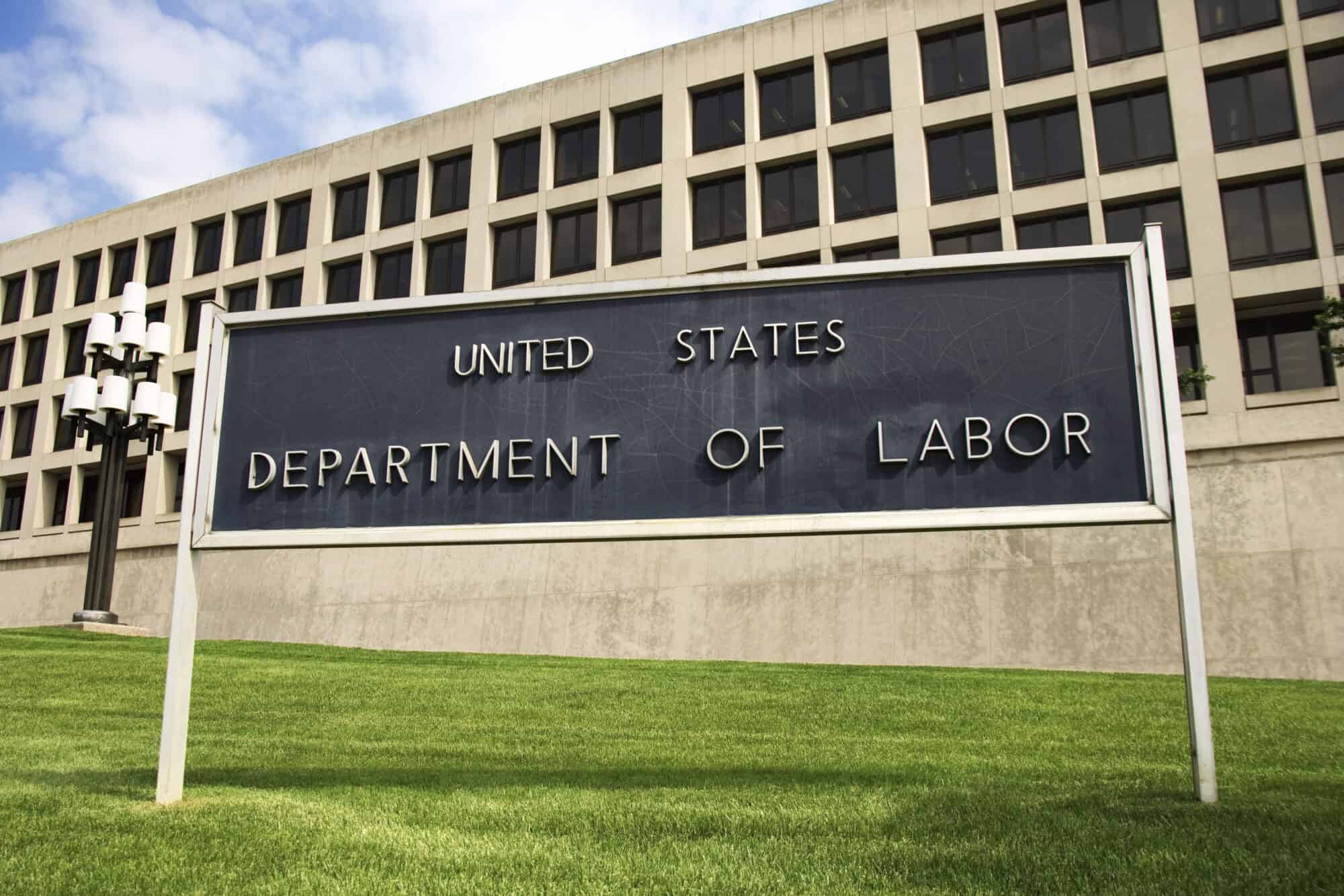
The NAM and allied groups are challenging the U.S. Occupational Safety and Health Administration’s recently finalized “walkaround” rule.
What’s going on: On Tuesday, the NAM, joined by like-minded business organizations, filed a lawsuit in the Western District of Texas to block OSHA’s final rule revising the Worker Walkaround Representative Designation Process. That rule was finalized in April and is set to go into effect May 31.
- The new rule would allow nonemployees—including union representatives, plaintiffs’ attorneys, community organizers and even competitors—to accompany OSHA inspectors on workplace safety inspections.
Why it’s a problem: Not only does the final rule fail to advance the agency’s mission of ensuring workplace safety, but it is beyond the scope of OSHA’s authority. What’s more, it violates businesses’ rights, the NAM said.
- The new regulation “infringes on manufacturers’ right to exclude others from their property, threatens new liabilities and risks compromising manufacturers’ intellectual property. The NAM Legal Center is filing suit to prevent this harm,” NAM Chief Legal Officer Linda Kelly said.
